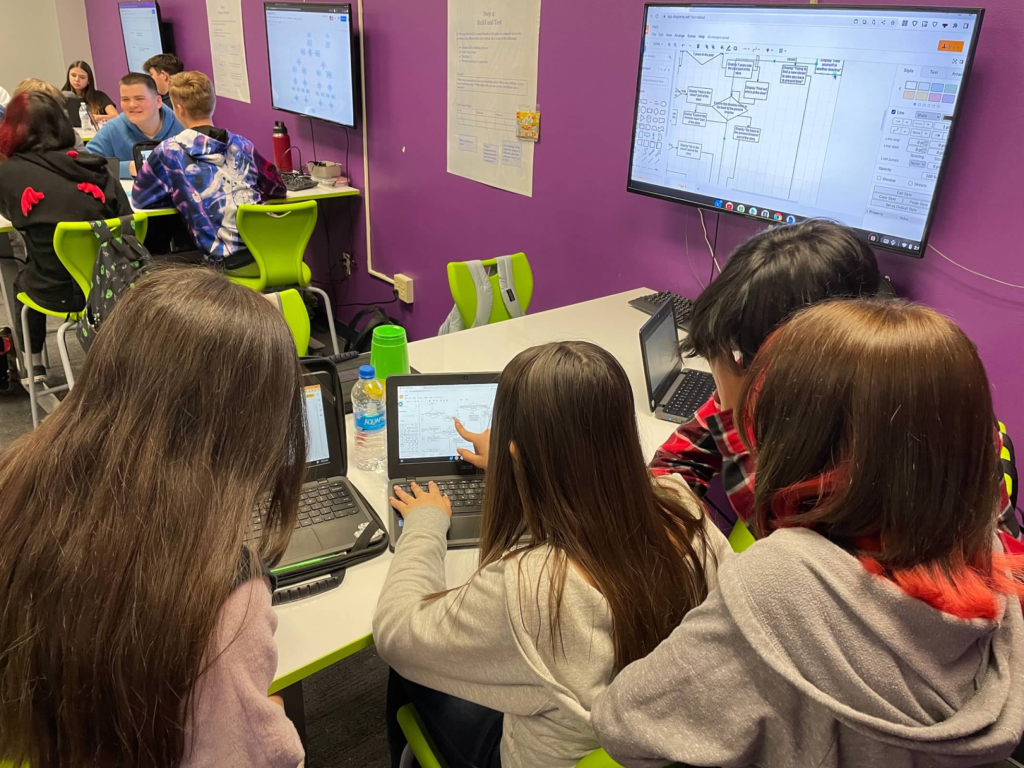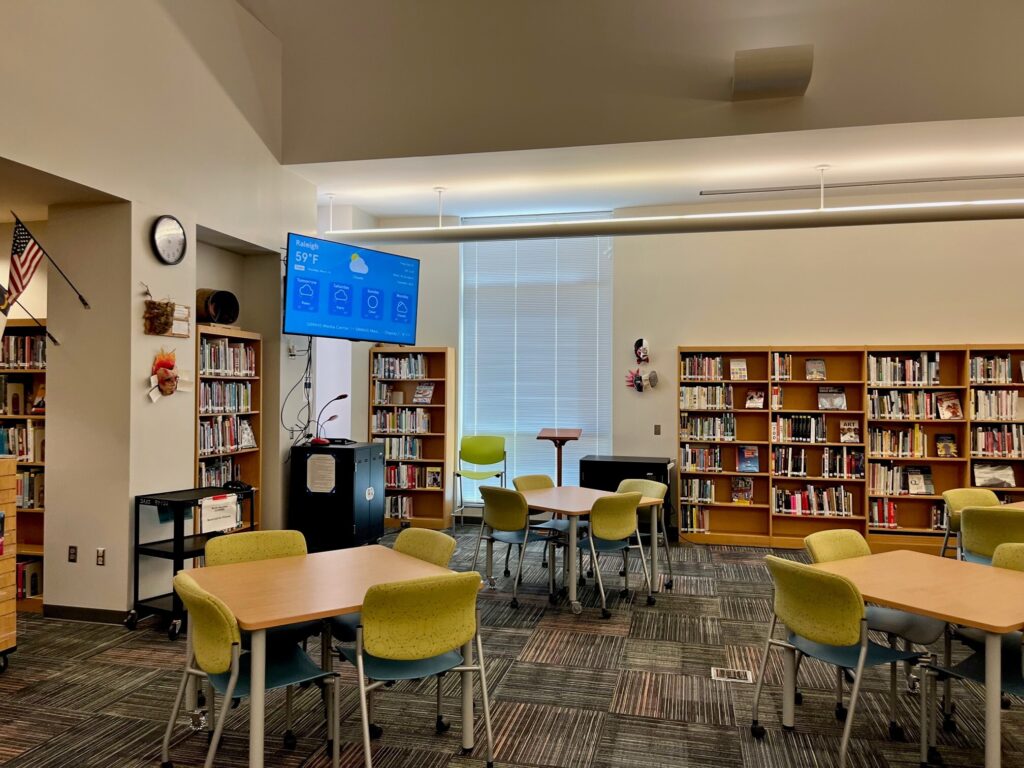A Comprehensive Guide to Securing ESSER Funding for Innovative Tech Solutions
The Elementary and Secondary School Emergency Relief (ESSER) Fund is a federal program that provides money to schools in an effort overcome the profound challenges of the Covid-19 pandemic. Since 2020, Congress has allocated $189.5 billion to the ESSER Fund in three successive stimulus bills. Each round has sought to address the emerging and evolving educational difficulties schools and students have encountered as a result of the pandemic.
In authorizing the third and largest tranche, Congress specifically emphasized the importance of using ESSER funds to invest in innovative technology solutions that accelerate learning and assist students in making up for lost instructional time.
This guide is for local school leaders, administrators, and IT professionals responsible for securing ESSER funds and determining their allocation. It explains the key points of the ESSER program, including:
- Determining the level of financial support available
- Navigating the application process
- Meeting the deadlines for liquidation of funds
- Understanding which educational needs could benefit from ESSER
- Exploring the various tech solutions ESSER could provide
- Planning for ESSER tech-related expenditures
- Complying with ESSER reporting requirements
Read on to discover how ESSER can help fund the much-needed investments in innovative educational technology that will help students recover from pandemic learning disruptions.
Want to Keep Reading?
Unlock the rest of this page and access this whitepaper.
How Schools Obtain ESSER Funding?
The distribution and expenditure of money from the ESSER Fund is a top-down process, overseen by the federal Department of Education (DoE). The DoE distributes money to state-level departments of education (known as state educational agencies, or SEAs) according to each state's proportional share of the federal government's total annual spending. This is determined by Title I of the Elementary and Secondary Education Act of 1965 (Title I), the federal law that provides school funding to support low-income and disadvantaged students.
SEAs, in turn, must distribute 90% of the ESSER funds they receive directly to schools and school districts (known as local educational agencies, or LEAs). The remaining 10% is set aside for emergency funding requests, expenditures on specific legislative priorities, and administrative costs.
The ESSER allocation each school or school district receives corresponds to its share of the state's annual award under Title I. In short, the greater the number of low-income and at-risk students a school serves and receives funding for under Title I, the larger its allocation of the state's total ESSER funding. It is worth noting, however, that ESSER funds are not Title I funds and have a much wider array of potential uses than Tile I spending.
Related: How to inspire active student engagement by leveraging technology in meaningful ways
As of April 2023, all SEAs have allocated their entire share of ESSER funding to schools and school districts (LEAs). You can find your school's ESSER Fund award from each funding round on the DoE's Educational Stabilization Fund (ESF) Transparency Portal.
However, states do not simply deposit allocated funds in a school's bank account automatically. They generally require schools to follow a specific process for funding application and expenditure reporting. You can find the application and reporting requirements for your school's allocated share of ESSER Funds and any available set-aside funds (see below) on your state's SEA website.
How to Make the Most of Your ESSER Funds

ESSER funds offer a wide variety of spending options to schools. This guide focuses on using ARP ESSER/ESSER III funds, since they're the most widely available as of April 2023, but the options discussed below also apply to any unspent ESSER II funds.
Allowable ARP ESSER/ESSER III Funding Uses

According to the latest DoE guidance, school and districts are allowed to spend their ARP ESSER/ESSER III funds on the following:
- Any activity authorized by the ESEA, IDEA, AEFLA, Perkins V, or subtitle B, title VII of McKinney-Vento
- Coordination of school preparedness and response efforts with State, local, Tribal, and territorial public health departments, and other relevant agencies, to improve coordinated responses to prevent, prepare for, and respond to COVID-19
- Providing your principals and other school leaders with the resources necessary to address the needs of their schools
- Activities to address the unique needs of low-income children or students, students with disabilities, English learners, racial and ethnic minorities, students experiencing homelessness, and children and youth in foster care, including how outreach and service delivery will meet the needs of each population
- Developing and implementing procedures and systems to improve your school's preparedness and response efforts
- Training and professional development for your staff on sanitation and minimizing the spread of infectious diseases
- Purchasing supplies to sanitize and clean your buildings and facilities
- Planning for, coordinating, and implementing activities during long-term closures of your school, including providing meals to eligible students, providing technology for online learning to all students, providing guidance for teachers and staff for carrying out requirements under the IDEA, and ensuring you can continue to provide other education services consistent with all Federal, State, and local requirements
- Purchasing educational technology (including hardware, software, and connectivity) that aids in regular and substantive educational interaction between your students and their classroom instructors, including low-income students and students with disabilities (may include assistive technology or adaptive equipment)
- Providing mental health services and support, including by implementing evidence-based full-service community schools
- Planning and implementing activities related to summer learning and enrichment and supplemental after-school programs, including providing classroom instruction or online learning during the summer months and addressing the needs of your low-income students, students with disabilities, English learners, migrant students, students experiencing homelessness, and children and youth in foster care
- Addressing the academic impact of lost instructional time among your students
- Repairs and improvements to your facilities to reduce the risk of virus transmission and exposure to environmental health hazards, and to support student health needs
- Inspection, testing, maintenance, repair, replacement, and upgrade projects to improve the indoor air quality in your facilities, including mechanical and non-mechanical heating, ventilation, and air conditioning systems, filtering, purification and other air cleaning, fans, control systems, and window and door repair and replacement
- Developing strategies and implementing public health protocols including, to the greatest extent practicable, policies in line with guidance from the CDC for the reopening and operation of your facilities to maintain the health and safety of students, educators, and other staff
- Other activities necessary to maintain the operation and continuity of services you provide and to continue employing existing staff
This is a vast array of potential expenditures. But it comes with one important caveat. Your school must spend at least 20% of its allocated ARP ESSER/ESSER III funds on implementing evidence-based interventions that address the academic impact of lost instructional time on its students, such as by providing intensive or high-dosage tutoring or accelerating learning.
Required Uses of Set-Aside Funds
Congress requires every state's SEA to hold back 10% of its total ARP ESSER/ESSER III allocation for specific purposes. SEAs can use up to 0.5% (or 5% of the held-back funds) for administrative costs. But the remainder must be committed to spending on earmarked priorities. Specifically, SEAs must spend or allocate (e.g., through sub-grants or contracts) the set-aside funds on:
- Addressing learning loss (at least 5% of total ARP ESSER/ESSER III funding)
- Summer enrichment programs (at least 1%)
- Comprehensive after-school programs (at least 1%)
- Emergency needs for responding to the coronavirus (up to 2.5%)
SEAs may require separate applications or reporting for schools and districts that wish to receive set-aside funds. But school leaders and IT professionals should pay attention to the potential availability of set-aside money over and above their school's general allocation of ARP ESSER/ESSER III funding.
DoE's Emphasis on Innovative Educational Technologies
DoE guidance emphasizes the critical role technology can play in achieving the goals of ARP ESSER/ESSER III. Schools may spend on innovative educational technology to, for example:
- Facilitate instruction that accelerates learning and mitigates the effects of the pandemic on lost instructional time.
- Provide embedded assessment of students and differentiated instruction.
- Help English learners access instruction, curricula, or enrichment resources.
- Meet IDEA goals like enhancing learning or enhancing accessibility for children with disabilities, or
- Support remote instruction for all students
These are just a few examples the DoE offers as desirable uses of ESSER funds for technology spending. Virtually any evidence-based educational tech solution that serves to achieve the broad purposes of ESSER funding can qualify as a permissible use of your school's allocation or as the basis for pursuing a grant of set-aside funds (to the extent available from your SEA).
Get to Know Your School's Plan for Using ARP ESSER/ESSER III Funds
By law, LEAs must prepare a plan explaining how they intend to use ARP ESSER/ESSER III funds and submit it to their state SEA. Submission of a plan is a necessary precondition to accessing the latest round of ESSER funding. The plan must cover, at a minimum:
- The extent to which and how the school will use funds to implement coronavirus prevention and mitigation strategies
- How the school plans to use its fund allocation, specifically including the minimum 20% it must spend on addressing the academic impact of lost instructional time
- How the school's spending will address students' social, emotional, mental health, and academic challenges, especially those most impacted by the pandemic
In preparing the plan, LEAs must engage in meaningful consultation with all relevant stakeholders, including students, families, district and school leadership, teachers and staff, and groups representing specific communities or disadvantaged groups the LEA serves. The school or district must also invite public input on the plan's development.
As of April 2023, most schools and districts nationwide have submitted an ARP ESSER/ESSER III fund plan to their state SEA. The DoE website contains links to LEA plans organized by state. Based on a sampling of plans from around the country, most SEAs have accepted submissions that discuss the requisite topics at a relatively high level of generality. By and large, SEAs have not required schools to supply descriptions of proposed spending with line-item specificity. Instead, SEAs have tended to ask for detailed accounts only once schools have committed to expenditures consistent with a plan's broadly stated goals.
Most schools and districts retain significant discretion in spending their ARP ESSER/ESSER III funds. Plans submitted to SEAs set the broad parameters for anticipated spending, but school leaders maintain control over choosing products, services, or initiatives worthy of investment.
To prepare for using ARP ESSER/ESSER III funds for innovative educational technology at your school or district, (re)familiarize yourself with the scope of the plan your LEA submitted to the state SEA. Chances are your school or district included language in the plan that can accommodate technology spending.
If your plan inadvertently omitted a description of products or initiatives encompassing your school's technological needs, you may consider an amendment, assuming your SEA will allow it. We would expect this to be a rare occurrence, however, because of the breadth of permissible spending of ARP ESSER/ESSER III funds.
Review Your Educational Technology Needs Institution-Wide
To the extent you still need to do so, review your LEA's current educational technology needs to determine which ones fit within the parameters of the plan your LEA submitted to the state. Be sure to check in with stakeholders throughout your institution, as it may have been upwards of a year since the LEA made its submission. You'll likely find pent-up demand for technological innovations and upgrades from top-to-bottom in your school or district.
IT Administration
As a rule, most school IT leaders maintain a wish list of hardware and software solutions that they would deploy in a heartbeat if only they had the resources. Many of these products fit within the ARP ESSER/ESSER III remit. They might include, for example:
- Upgrades to wireless networks to enhance remote learning and classroom use of internet-enabled devices
- Solutions to strengthen institutional cybersecurity, a necessity in remote learning environments
- Network administration and monitoring tools to promote efficient bandwidth consumption and responsible device usage
IT investments are also critical components of expanding a school's physical plant or workforce, both of which are permissible expenditures of ESSER funds.
Classroom Instruction
Congress explicitly intended ARP ESSER/ESSER III funding to facilitate the return to in-person learning and initiatives to compensate for lost instructional time. Investments in classroom technology can serve those purposes in myriad ways.
Among the most innovative solutions to emerge and win over teachers are screen mirroring products that allow instructors and students to simultaneously share and interact with digital content across multiple devices (regardless of brand or operating system). These tools fall squarely within the DoE's emphasis on investment in tech that helps students make up for lost instructional time by aiding in "regular and substantive educational interaction between students and their classroom instructors."
Other ESSER-worthy tech innovations that can meet the needs of classroom instructors include software to assist in the assessment of student progress and development of differentiated lesson plans based on individual student needs, subscriptions to online subject-matter and teaching resources, and purpose-built virtual classroom platforms to assist teachers in hybrid in-person/remote settings.
Special Education and At-Risk Students
The DoE's guidance on ARP ESSER/ESSER III spending also emphasizes meeting the needs of disabled and at-risk student populations significantly impacted by the pandemic. Numerous technological solutions qualify for funding to meet this prerogative, such as:
- Assistive technology to facilitate catch-up learning and classroom access for disabled students
- Software to help English learners participate in classroom activities and to accelerate language acquisition
- Laptops and tablets equipped with software designed to assist with remote learning or to connect migratory students with instructors
- Connections to remote educational or mental health services for students at rural or underfunded schools
Many of these and similar expenditures may also satisfy LEAs' obligations under federal statutory schemes like the IDEA and Perkins (among others).
School Administration
ESSER funds can also go toward meeting the needs of school leaders and administrators, particularly for implementing public health preparedness and response. School leadership may spend ESSER dollars on digital signage solutions that provide essential information to students and employees during an emergency.
Related: Be Ready: Why Digital Signage Is a Necessity in Your District's Emergency Plans for Schools
Investments in modern workforce management technology and academic scheduling software can assist school districts in planning for and navigating staffing shortages during coronavirus outbreaks. And the latest educational tech solutions also help administrators collect, track, and analyze the various demographic, budgetary, and learning metrics they need for reporting and performance assessment.
Follow Application and Reporting Requirements
Once you have identified appropriate ESSER fund expenditures that coincide with the plan your LEA submitted to the state, you can ask for the necessary funds through your SEA's application process (found on its website).
Most schools have already been through the application process, spent some of their ARP ESSER/ESSER III funds, and established a procedure or point-person for submitting the necessary documentation to the state. Consult with your school leadership if you are still getting familiar with the process.
Be mindful that after receiving and spending—or committing to spend—ARP ESSER/ESSER III funds, your SEA or the DoE may also require you to report on or account for the expenditure. SEAs have a legal obligation to report data on their ESSER fund use to the DoE. And the DoE's Inspector General has signaled a keen interest in tracking how LEAs spend ESSER dollars on technology.
Always keep complete records of your school's ESSER tech spending. The DoE may seek to audit institutions to ensure compliance with the program's overall mission and evaluate the effectiveness of innovative tech solutions.
Consult the DoE or Your SEA for Additional Guidance
Throughout this guide, we have linked to numerous government resources to assist school leaders in learning about and taking full advantage of ESSER funding. We have covered the basics of ESSER fund use and compliance. If you still have questions, the DoE and your local SEA websites are the most reliable and authoritative places to find answers.
ESSER funding offers schools and school districts a golden opportunity to enhance their use of technology inside and outside of the classroom. Vivi has developed an innovative, highly flexible screen mirroring platform for education that advances the specific goals of ARP ESSER/ESSER III by facilitating interaction between students and instructors. Contact us today to book a demo.

